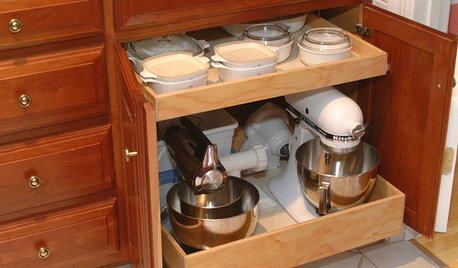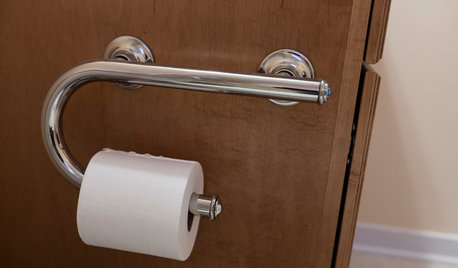Free Dixie Chopper with problem CV20 S
bigoledude
12 years ago
Related Stories

GARDENING GUIDESGet on a Composting Kick (Hello, Free Fertilizer!)
Quit shelling out for pricey substitutes that aren’t even as good. Here’s how to give your soil the best while lightening your trash load
Full Story
DECORATING GUIDESBudget Decorating: How to Decorate Smart and Slow
To make the most of your decorating dollar, forgo the disposable stuff, think vintage and free first and give yourself a splurge
Full Story
DIY PROJECTSLight Up Your Night With an Easy Outdoor Table Lamp
Hit up Goodwill and the hardware store to make this lamp for a deck or poolside patio in minutes
Full Story
KITCHEN APPLIANCESConsidering a New Kitchen Gadget? Read This First
Save money, time and space by learning to separate the helpers from the hassles
Full Story
BATHROOM DESIGNPowder Room Essentials to Keep Guests Happy
Set out these bathroom necessities (hello, hand towels) to make your company comfortable and your parties run smoothly
Full Story
ENTERTAININGSummer Living: How to Welcome Weekend Guests
Thoughtful touches and smart planning make summer visitors feel right at home
Full Story
LIFEThe Absolute Right Way to Hang Toilet Paper. Maybe
Find out whether over or under is ahead in our poll and see some unusual roll hangers, shelves and nooks
Full Story
LIFERetirement Reinvention: Boomers Plot Their Next Big Move
Choosing a place to settle in for the golden years? You're not alone. Where boomers are going and what it might look like
Full Story
BATHROOM DESIGNOutfit Your Shower With the Right Bench for You
Whether you want a simple perch or a massive seat in your shower, our guide can help
Full Story
ECLECTIC STYLE5 Reasons to Hit That Secondhand Store
New things have their place, but old things have a history and beauty all their own
Full Story





mownie
tomplum
Related Professionals
Canton Landscape Architects & Landscape Designers · Anderson Landscape Contractors · Canton Landscape Contractors · Peabody Landscape Contractors · Pelham Landscape Contractors · Fairhope Landscape Contractors · Vashon Landscape Contractors · Wallingford Landscape Contractors · Weymouth Landscape Contractors · 07920 Landscape Contractors · Selma Landscape Contractors · Marietta Window Contractors · Hutto Window Contractors · Meadow Woods Window Contractors · Tamalpais-Homestead Valley Window Contractorsandyma_gw
mownie
bigoledudeOriginal Author
walt2002
mownie
tomplum
bigoledudeOriginal Author
mownie
rustyj14
mownie